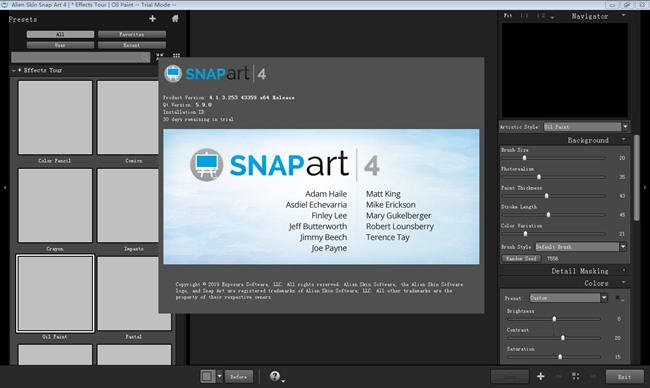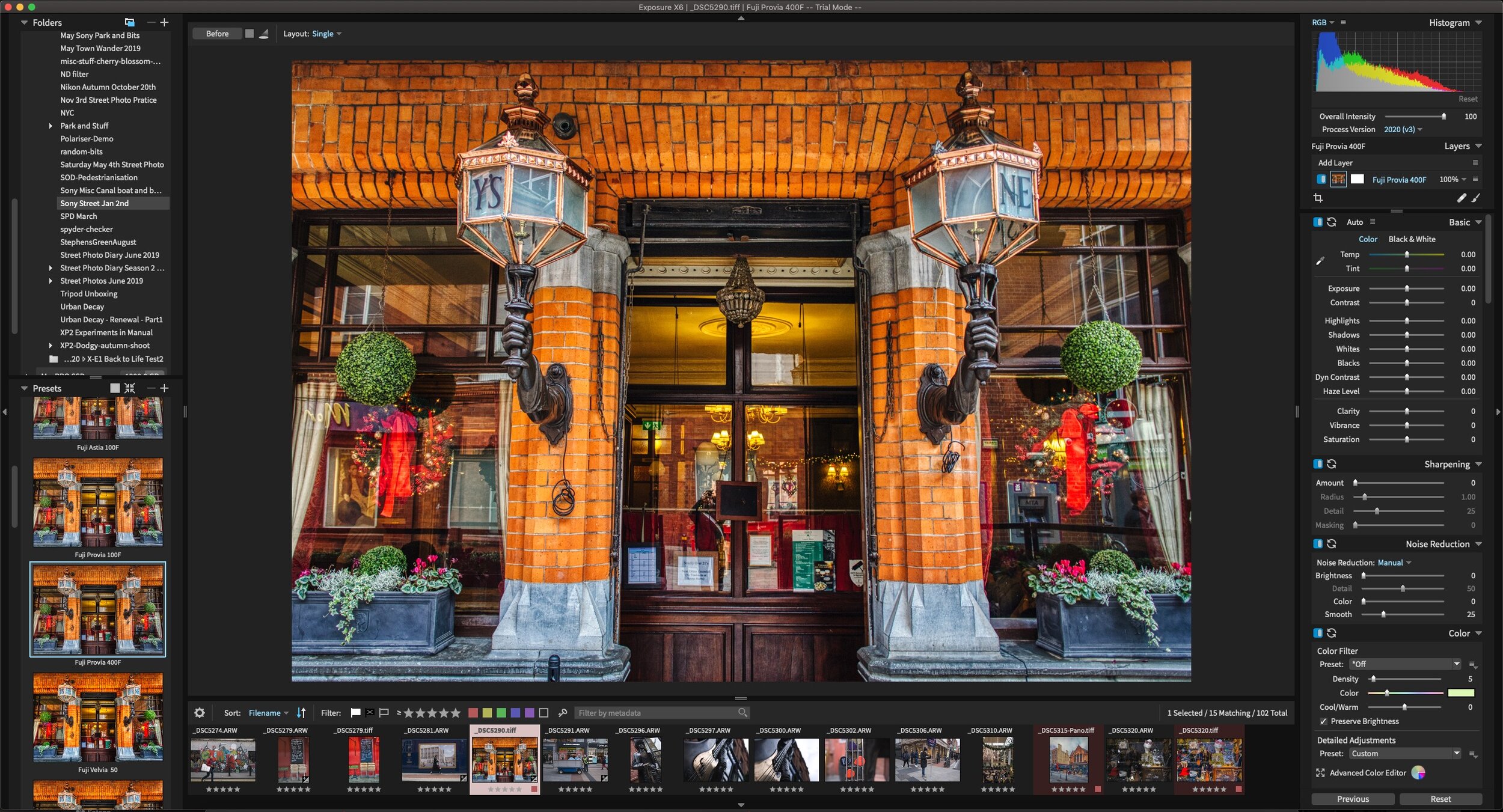


Unlike Photoshop’s Lens Blur filter, Bokeh can create extremely thin depth of field effects and gives you more control over the bokeh’s appearance. It goes beyond simple blurring to create a realistic bokeh, complete with shaped, brightened highlights.
#Alien skin snap art review software
To get a software solution that accurately mimics shallow depth of field, you need to turn to a Photoshop plug-in.īokeh, a $199 Photoshop plug-in, offers advanced tools for creating shallow depth of field effects. Photoshop provides its own Lens Blur filter for simulating shallow depth of field. While it does do a better job of blurring the background, it doesn’t let you apply as much blur as you’d need to simulate the super shallow depth of field of a 1.2 lens.įigure 4. Photoshop does have a Lens Blur filter that lets you apply a more “realistic” lens blurring. Figure 3 isn’t as appealing as Figure 1, with true shallow depth of field. In the optical 1.2 image (Figure 1), it has a very different shape from the Gaussian Blurred image (Figure 3). The main difference is that in Figure 3, the highlights haven’t brightened - if anything, they’ve become dull - and their shape isn’t exaggerated into big, round circles. While the background is blurry, it has a very different quality from Figure 1, shot at f1.2 with authentic bokeh. The Gaussian Blur I used on this image doesn’t look like the blurring you get from a lens. But look what happens if I take the f11 image and use Gaussian Blur on the background:įigure 3. Photographers often speak of the “butteriness” of a particular lens’ bokeh, referring to the overall smoothness of the defocusing.īecause it’s easy to think that an image with shallow depth of field simply has a blurry background, you might be tempted to use one of Photoshop’s normal blur filters. For example, specular highlights - the bright highlights that occur on shiny parts of chrome, or on the surface of water - often appear as soft circles. With a high-quality lens, out-of-focus areas in an image will soften in a particular way. Yes, there is an aesthetic to blurriness, and once you start paying attention to it, you realize that some soft backgrounds are nicer than others. Photographers use a Japanese word, bokeh (pronounced “?”), to refer to the overall quality of the blurriness of the background. Obviously, the background in the first image is much blurrier. Here’s the same shot taken with the same lens, but at f11.įigure 2. (Click on all images to see larger versions.)įigure 1.This image was shot at f1.2 to achieve very shallow depth of field. This gives you an example of what true, optically generated shallow depth of field looks like. Here’s an image shot at f1.2 using a Canon 5D Mark II, with the Canon 50mm f1.2 lens. However, as you’ll see, if you’re serious about shallow depth of field, software may not be the ultimate solution. While Photoshop provides its own tools for creating a shallow depth of field effect, you’ll get better results from Alien Skin’s Bokeh plug-in. For those times, you might want to create the effect digitally after taking the shot. However, there are times when shooting with shallow depth of field isn’t possible. This type of depth of field control can be essential if you want to compose images in a way that brings an appropriate degree of attention to your subject, and it’s one of the most powerful creative controls in the photography arsenal.

On the other hand, photographers select particular apertures, and control the apparent size of an image’s background, to reduce a scene’s depth of field, thus throwing some image elements out of focus. On the one hand, photographers use lenses that deliver a fine degree of sharpness and advanced autofocus systems that ensure proper focus. Note that that limited use is not a deficiency in the product, but a reality of the difficulty in masking more complex images.įocus is a funny thing. Plug-in’s sliders are simple enough that moving beyond the presets is very easy.Ĭon: $199 price is too high given how infrequently you’ll be able to use it. Gives much greater control over highlight appearance and apparent depth than Photoshop alone. Pros: Accurately simulates shallow depth of field.


 0 kommentar(er)
0 kommentar(er)
